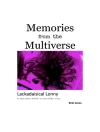Som ett företal till första upplagan af »Jane Eyre» var onödigt, skref jag ej något sådant; men denna andra upplaga fordrar några få ord till uttryckande af min tacksamhet och framställande af åtskilliga anmärkningar.
Det är till tre olika håll jag har att vända min tacksamhet.
Till allmänheten för den godhetsfulla uppmärksamhet den egnat en enkel berättelse med få anspråk.
Till tidningspressen, för det vackra fält dess ärliga omdöme öppnat för en okänd täflare på vädjobanan.
Till mina förläggare, för det stöd deras takt, deras energi, deras praktiska sinne och deras frikostighet skänkt en okänd författare utan några rekommendationer.
Tidningspressen och allmänheten äro för mig obestämda personligheter, och jag måste tacka dem i obestämda ordalag; men mina förläggare äro bestämda personligheter, och så äro äfven vissa ädelmodiga kritici, hvilka uppmuntrat mig så som endast högsinnade män förstå att uppmuntra en kämpande främling; till dem, d. v. s. till mina förläggare och dessa särskilda recensenter säger jag med varm uppriktighet: mina herrar, jag tackar er af mitt innersta hjerta!
Charlotte Brontë
Jane Eyre [EPUB ebook]
Jane Eyre [EPUB ebook]
قم بشراء هذا الكتاب الإلكتروني واحصل على كتاب آخر مجانًا!
لغة اللغة السويدية ● شكل EPUB ● ISBN 9782383838753 ● حجم الملف 0.6 MB ● الناشر Librorium Editions ● نشرت 2023 ● للتحميل 24 الشهور ● دقة EUR ● هوية شخصية 8849198 ● حماية النسخ DRM الاجتماعية












